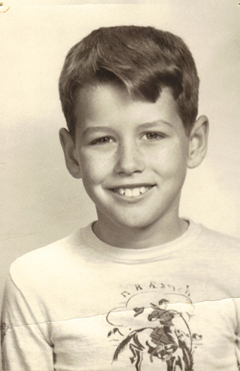William Styron in Chile in 1988, by Marcelo Montecino at Flickr Commons
In 1985, at the age of sixty and near the peak of a heralded writing career, William Styron was struck down for the first time in his life by depression. It lasted six months, a relatively short period of time, even for severe depressions like Styron experienced. But what Styron's depression lacked in longevity it made up for in intensity – the book is subtitled a memoir of "madness," and Styron writes of brain storms and mental chaos. Before his torment ended Styron hospitalized himself, which is an unusual and drastic treatment for the malady. The usual treatment for it in 1985 was (and today is) psycho-active medications and psychotherapy.
My depression lasted for years and was never as intense as Styron's. It was not purely unipolar. I had a month or two of mania every spring. My depression's defining moment (my words), and beginning point out of the pit, was not a musical piece I loved, like Styron’s; but a realization that “this thing” was not something I "had" but something I “was” - and always would be. These different defining moments may account in part for the different endings of our maladies: a considerable time after my defining moment had passed, my depression simply lifted over a period of months like a poisonous gas, to my indescribable happiness and relief. In any case, Styron takes great care to emphasize the variation in symptoms from person to person; then he discusses with compelling readability and anecdotes the symptoms of the disease, with particular reference to those he suffered. (I loved his calling "self-loathing" just that - which is exactly what it is - not "low self-esteem" as the Diagnostic and Statistical Manual of Mental Diseases called it when Styron published Darkness Visible. Using such symptomatology, if the DSM concerned itself with bodily ailments, it might have characterized viral pneumonia as a bad chill.) People who have never been depressed ought to try to understand that the moods Styron describes are very different from emotions like sadness, loneliness, and regret.
With regard to causes, Styron is as cautious as he is about symptoms. He writes that he lost his mother as a young teen and that he was withdrawing from longtime alcohol abuse when he became depressed. These are two commonly identified precursors, but of course, with what degree of confidence can conclusions drawn from depressives who seek professional help be attributed to the many more depressives who do not? Styron also writes that loss is probably always involved. I strongly agree, but wouldn't the object of the loss vary as much from person to person as the symptoms of the malady do? I think what I lost was my hope for the future I'd expected to have, but I can't imagine this being the loss William Styron endured.
Darkness Visible is a wonderful book written by an artist who experienced severe depression while still a gifted and creative writer; he later relapsed and spent more and more time hospitalized as he grew older. The book’s title refers not only to the experience of depression, but to the perplexing nature of the illness in 1985, and today more than a generation later. At one point in the book, Styron recounts an analogy told him about how far we have to go in understanding the disease: we're Europeans still in the Caribbean of Christopher Columbus, with a great unexplored continent before us.
-
-





